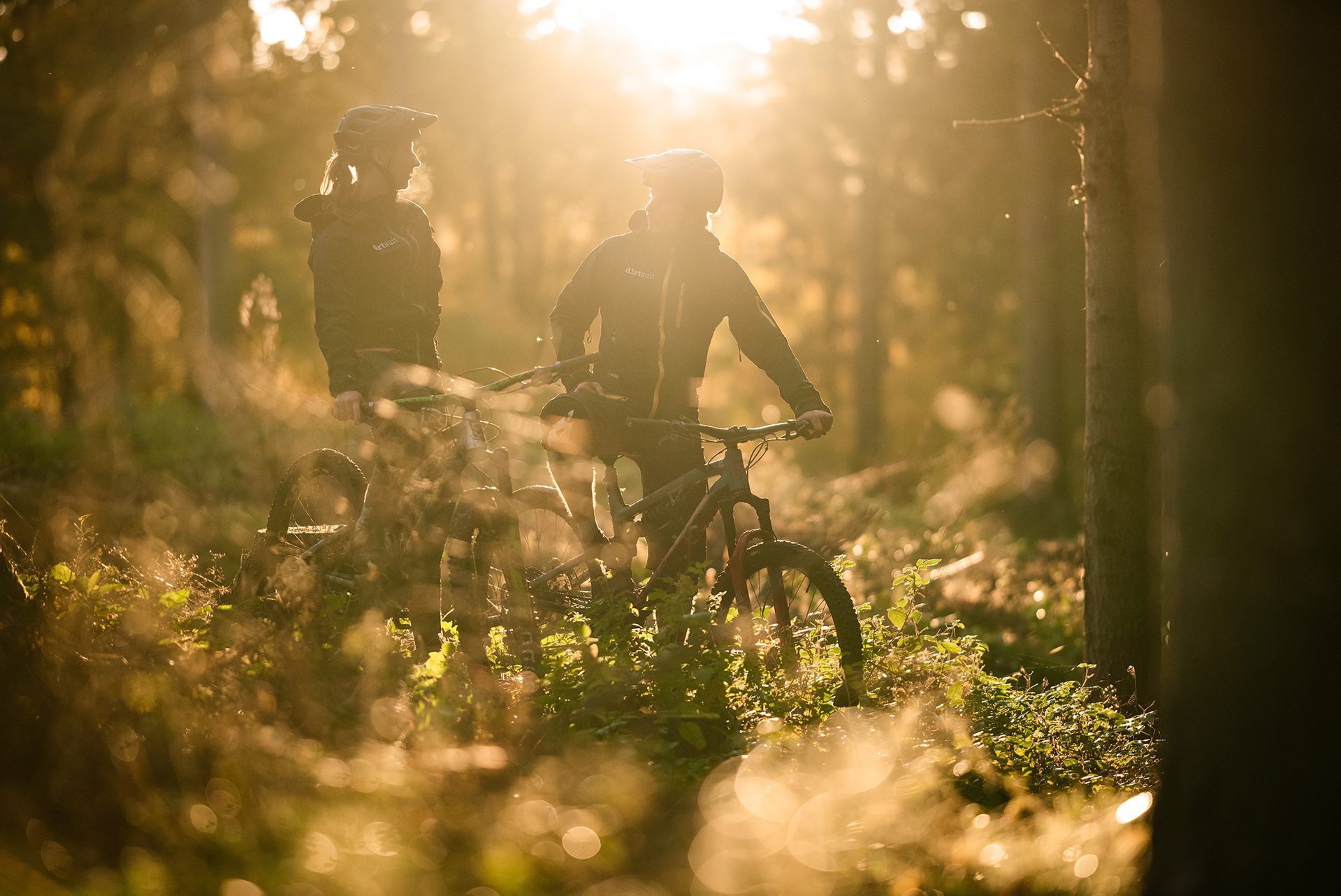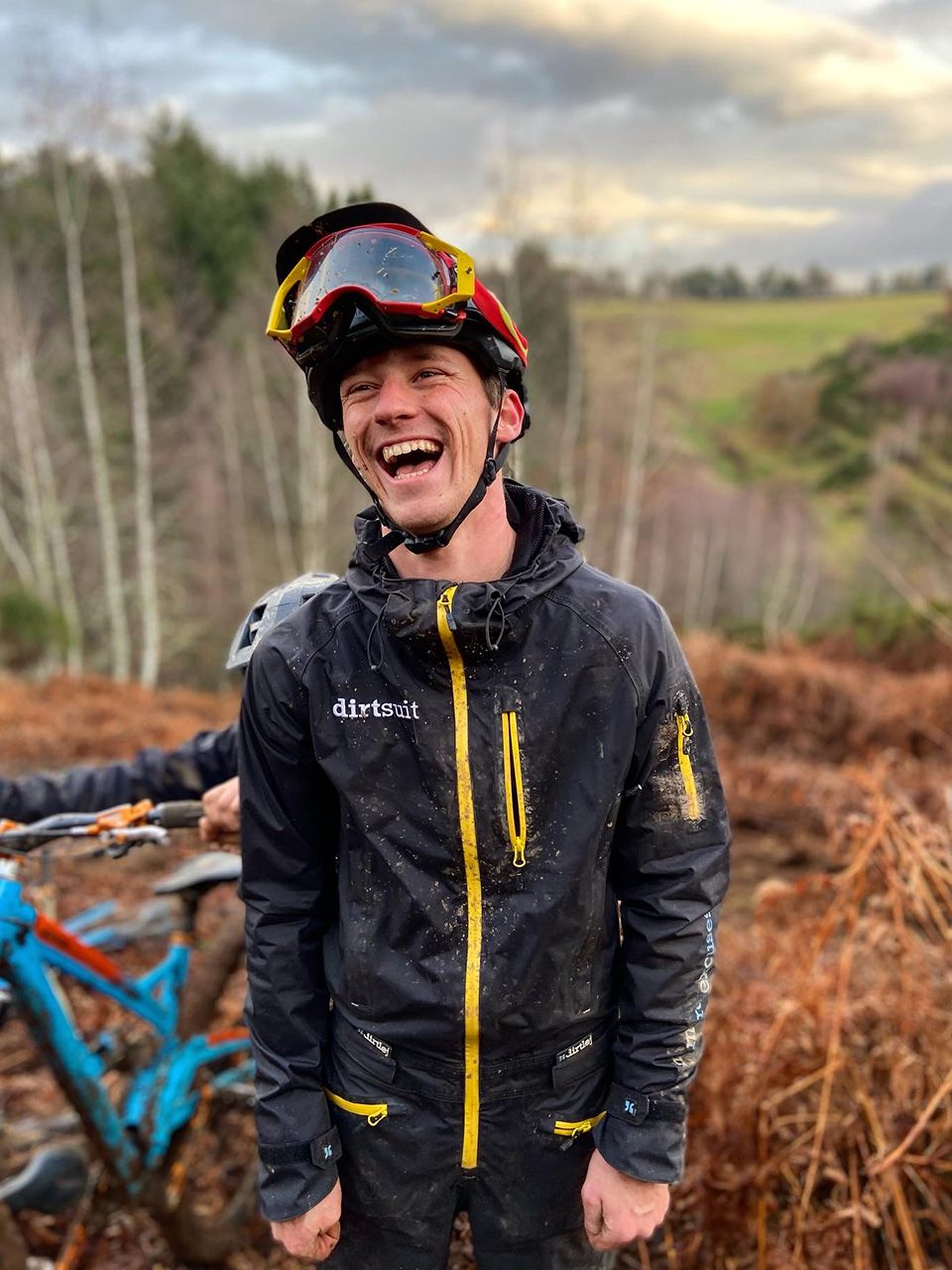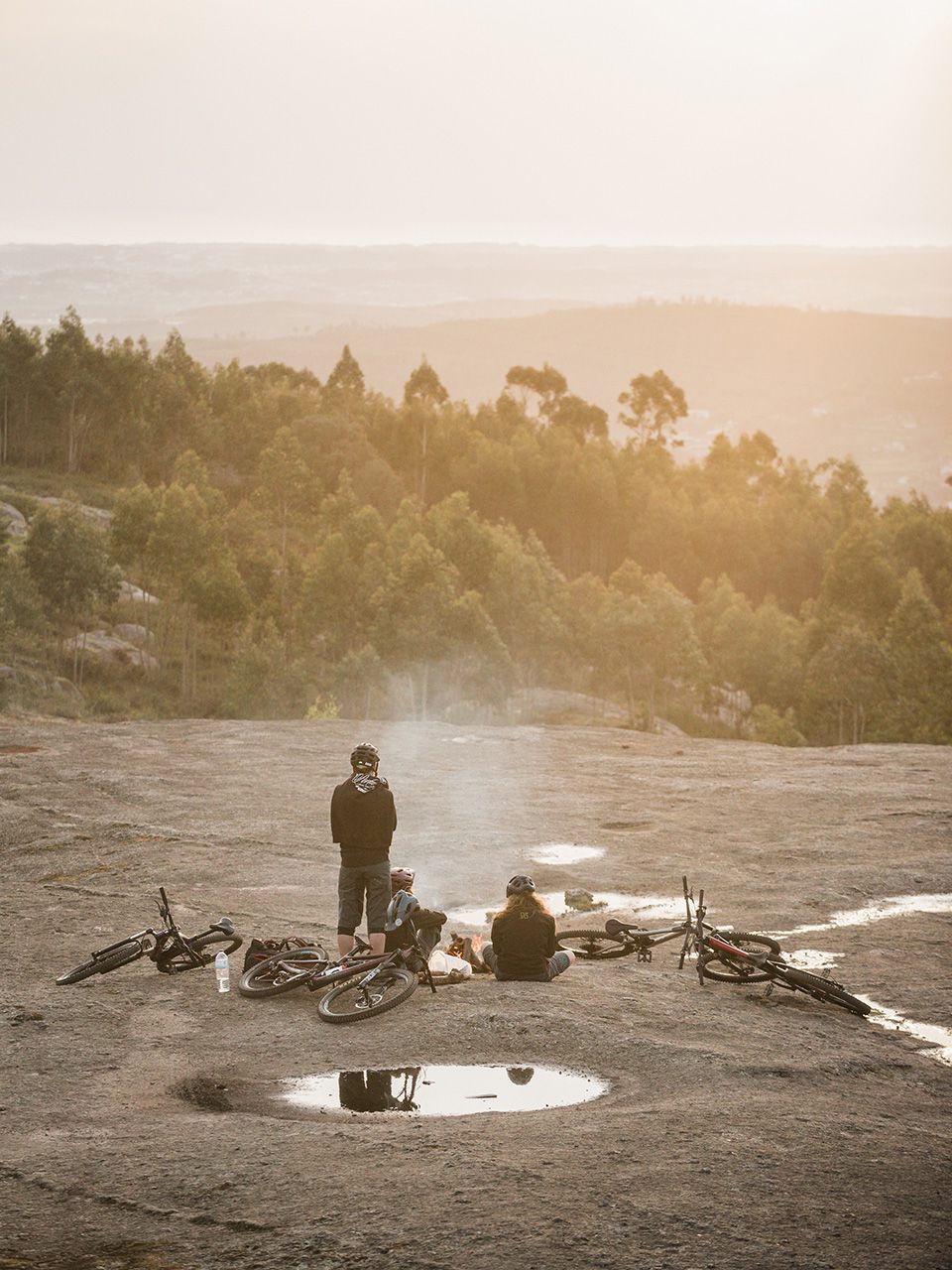
For those
who can’t
stop riding
Dirty, exhausted, cheering – we all know the feeling at the end of a trail. Mountain biking unites us in many ways, but especially one – our passion for riding.
We’re addicts to the adrenaline rush and the joy keeps us coming back for more. So, what’s holding you back? Let’s go for one more!
For those who can’t stop riding: no more excuses.


Nestled in the triangle of Germany, Switzerland, and France, close to the beautiful French Vosges and the Swiss Alpes, dirtlej's backyard is a proven testing ground of technical terrain. Our vision: To have a great time outside on the bike, no matter what conditions. Our mission: To build comfortable, durable, and reliable mountain bike products. You’ll have the most amazing time outside when you have the right gear.
The small team works with passion and lifeblood to offer a full range of technology-driven and customized products for athletes.
See you outside.
dirtlej
FAQ
Our products’ design, prototyping and testing take place at our main office in Germany.
We then work closely with suppliers in Asia and Europe, to source the best possible materials for our products. Our products are precision made at our partner’s factories in China, Taiwan, Portugal, Germany and Italy, with skilled specialists carrying out the production.
Asia is leading in technical outdoor manufacturing, and we carefully select partners who share our values and bring new technologies and capabilities that allow us to evolve. Our gear’s quality, durability and reputation stand testament to our manufacturing partners’ quality and outstanding expertise.
Manufacturing our products where we source the raw materials helps to limit their environmental footprint by reducing the distance the different parts need to travel.
Everything that is not functional waterproof gear is sourced and produced in Europe. Portugal and Italy are well-known for their apparel manufacturing, and we carefully select partners who share our values and bring new technologies and capabilities that allow us to evolve. Our gear’s quality, durability and reputation stand testament to our manufacturing partners’ quality and outstanding expertise.
Manufacturing our products where we source the raw materials helps to limit their environmental footprint by reducing the distance the different parts need to travel.
Dirt and sweat impair the breathability of functional materials. Remove the coarser dirt upfront and wash it at 30° Celsius max, spin-dry with 400rpm, let it dry at room temperature, tumble dry at low temperature (depending on the product), and eventually impregnate it afterwards. Use membrane-friendly detergent only (see dirtlej washit), fabric softeners destroy the membrane.
Packaging is important in protecting our products from moisture and dust when they are shipped, stored and then delivered. It is a constant balancing act between protecting the product and minimizing the environmental costs of the packaging itself (resource intensity in manufacturing, ability to be reused/recycled, end-of-life).
Since the beginning, we have only used 100% recycled and recyclable cardboard or tree-free paper for all labels, packaging and shipping. We reuse all boxes where possible and shred any boxes that are no longer needed to use as fillers in our packages.
Products, left over from development, testing or photoshoots represent resources – fabric, time, and energy – no longer in use but still useful. By getting these products into circulation, we can reduce unnecessary waste and you will be the only one with this single piece. Of course, availability is limited, if you’re interested, just get in touch.
Our products aren’t drysuits – a drip of water can always make it through, e.g., at the end of the zippers.
Zippers are wearing parts – the more carefully a zipper is treated, the longer it lasts. (e.g., remove dirt before opening/closing, don’t tear it, treat it with a care product containing silicone)
Abrasion is normal – if sand is, e.g., between saddle and product it has an effect comparable to sandpaper. This abrasion arises through normal usage.
Detergent is key – use ONLY detergent for functional clothing. Fabric softener destroys the membrane. (more about productcare)
Our products don’t have clearance for S-Pedelecs.
dirtlej is a portmanteau of three words that represent our brand. ‘dirt’, as a key player of our passion, ‘le’, for Lena and ‘j’ for Jan, the two founders.
Waterproof & breathable laminates consist of a membrane laminated between two layers of fabric. The membrane forms the waterproof part of the laminate. If the outer fabric becomes saturated with water, the fabric feels damp, without water penetrating the membrane. Another effect is that the wet fabric creates a counter-pressure on the membrane and thus significantly reduces breathability, causing sweat to collect on the inside and soak the clothing underneath. To prevent these effects, the outer fabric mustn’t become soaked, which is achieved through a DWR treatment.
Undoubtedly, fluorocarbons offer the best functionality for DWR, but the by-products remain in the environment for a long period. C8 has been the industry’s preferred DWR for decades but the impact on the environment has become too huge to ignore. We and several other manufacturers have adopted C6 (shorter chain) DWR as the lesser of both evils. Its by-products break down faster in the environment and are much less toxic to life forms. Bio-based DWR alternatives have not stood the test of time, resulting in functional products with a short lifespan. A short lifespan also constitutes environmental concerns because of the need to replace these products which involve energy and water usage, waste, and GHG generation. This is not a dirtlej problem, this applies to several other brands. Our MRSL (manufacturing restricted substances list) ensures that the use of C6 in our products is well within the set standards. We will continue to search for alternatives that would offer the highest functionality with the least possible effect on our environment.
Since 2021, our team consists of a sustainability expert (MSc/Environmental sciences) who calculates our carbon footprint and advises us on steps to further reduce our already low footprint. Savings from cost-intensive certification processes in turn goes into creating new jobs and adding more talent to our existing team.
 Welcome, you seem to visit us from the UK. Please note that we have a dedicated webshop for the UK.
Welcome, you seem to visit us from the UK. Please note that we have a dedicated webshop for the UK.